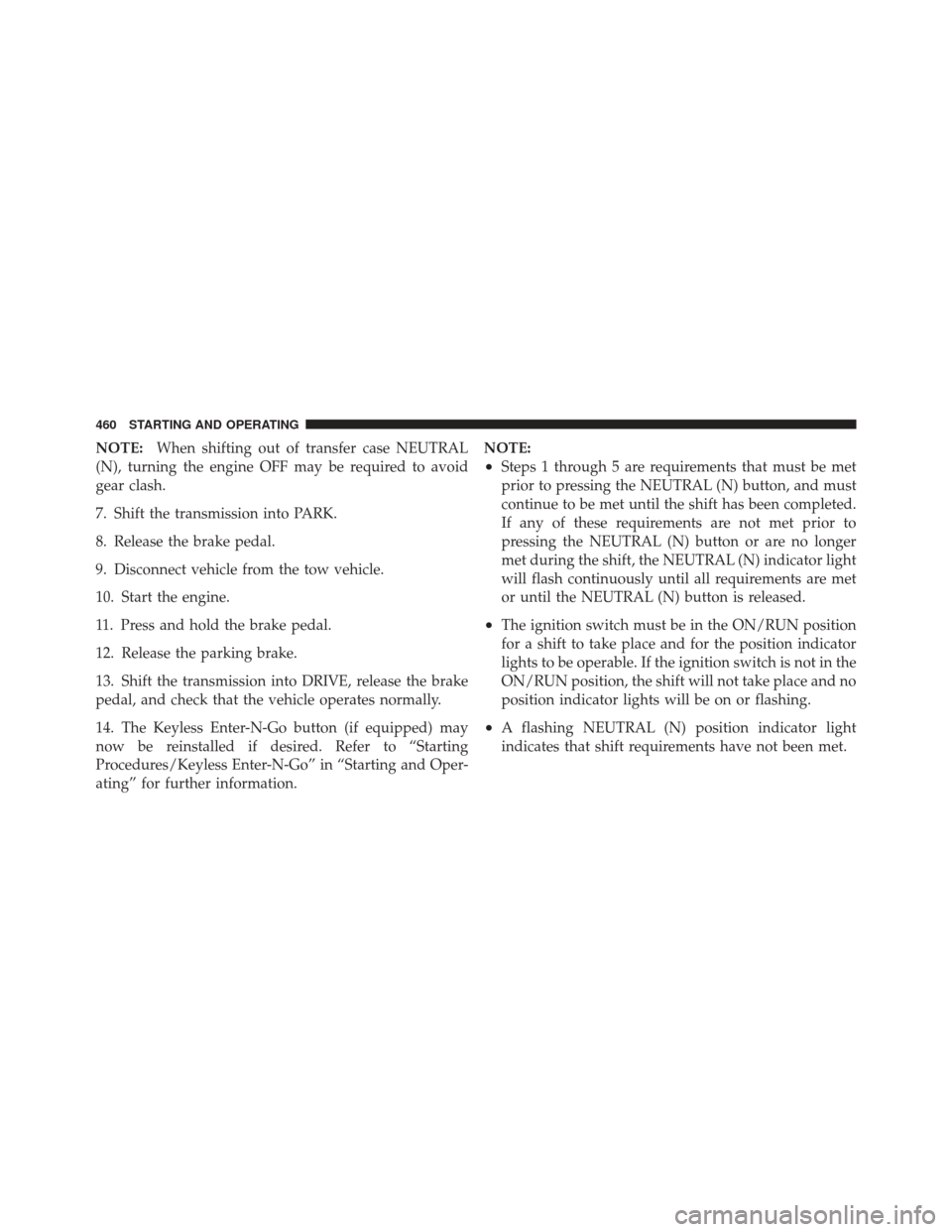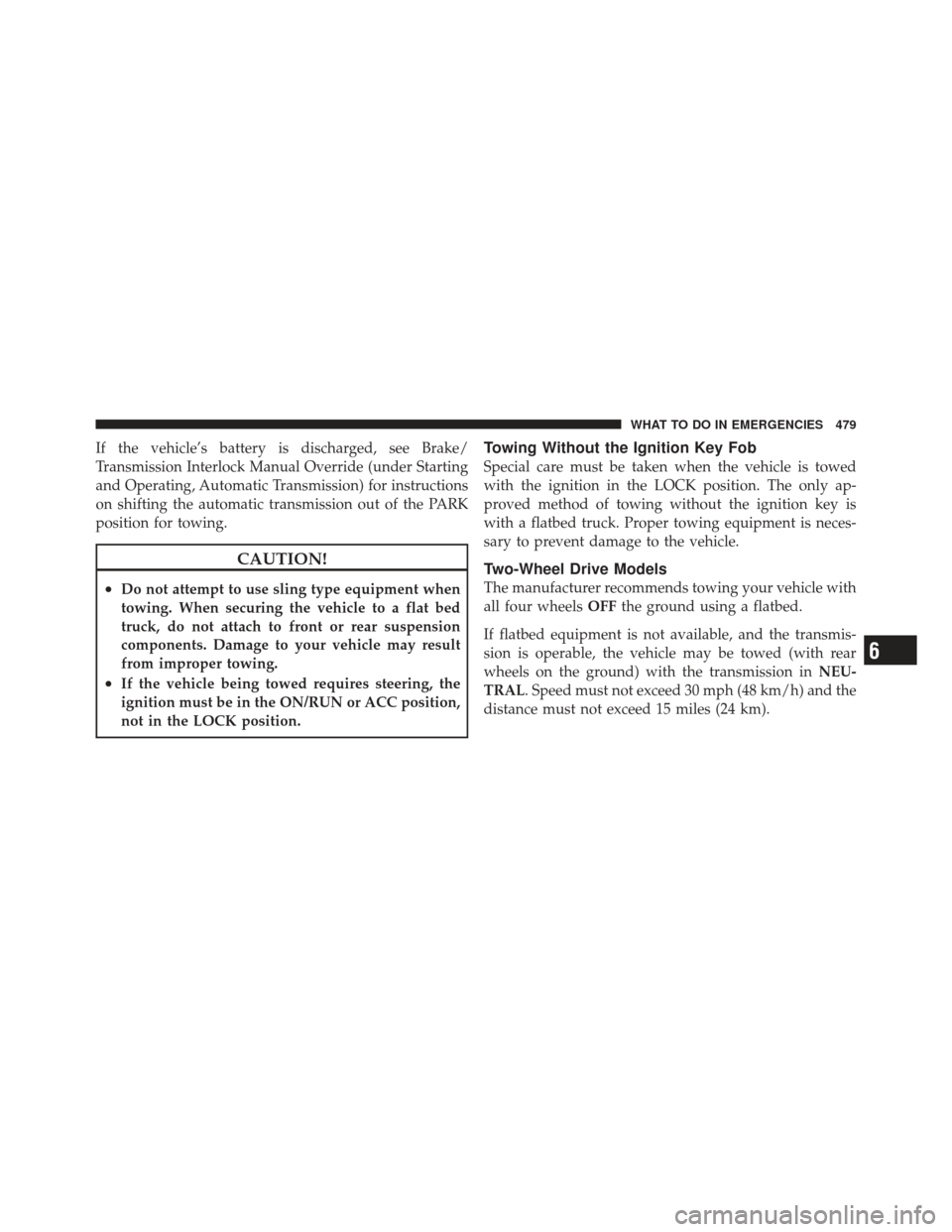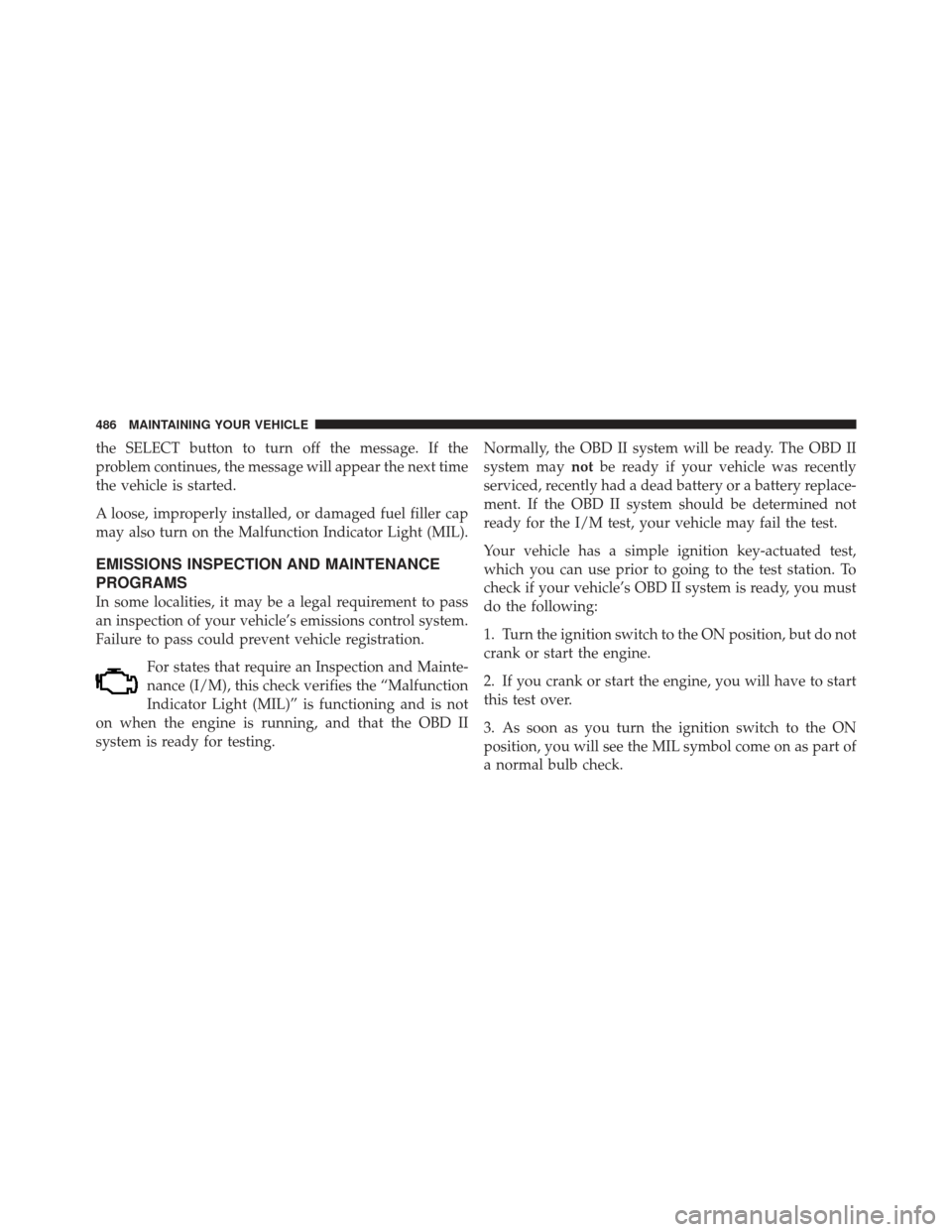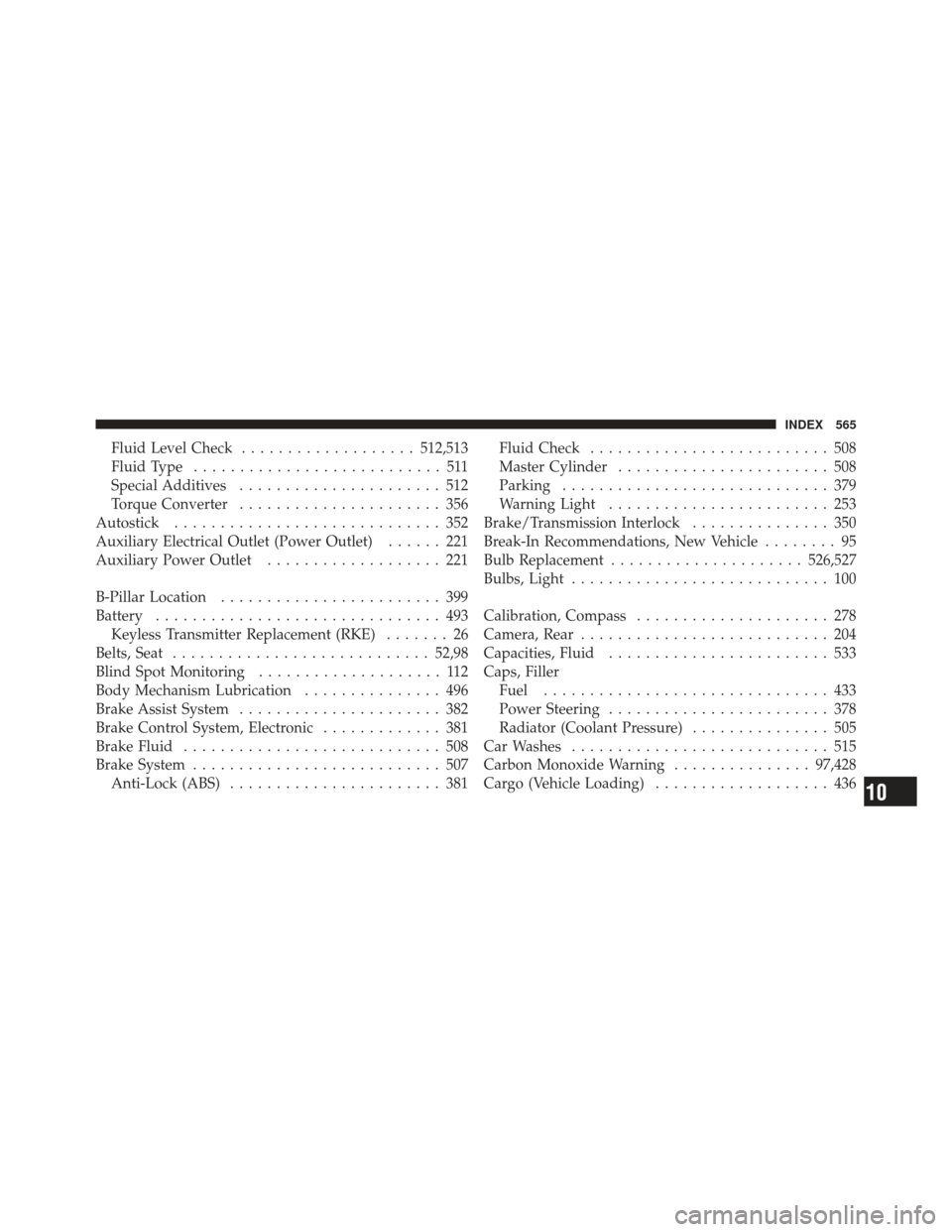Page 462 of 587

NOTE:When shifting out of transfer case NEUTRAL
(N), turning the engine OFF may be required to avoid
gear clash.
7. Shift the transmission into PARK.
8. Release the brake pedal.
9. Disconnect vehicle from the tow vehicle.
10. Start the engine.
11. Press and hold the brake pedal.
12. Release the parking brake.
13. Shift the transmission into DRIVE, release the brake
pedal, and check that the vehicle operates normally.
14. The Keyless Enter-N-Go button (if equipped) may
now be reinstalled if desired. Refer to “Starting
Procedures/Keyless Enter-N-Go” in “Starting and Oper-
ating” for further information. NOTE:
•Steps 1 through 5 are requirements that must be met
prior to pressing the NEUTRAL (N) button, and must
continue to be met until the shift has been completed.
If any of these requirements are not met prior to
pressing the NEUTRAL (N) button or are no longer
met during the shift, the NEUTRAL (N) indicator light
will flash continuously until all requirements are met
or until the NEUTRAL (N) button is released.
•The ignition switch must be in the ON/RUN position
for a shift to take place and for the position indicator
lights to be operable. If the ignition switch is not in the
ON/RUN position, the shift will not take place and no
position indicator lights will be on or flashing.
•A flashing NEUTRAL (N) position indicator light
indicates that shift requirements have not been met.
460 STARTING AND OPERATING
Page 463 of 587
WHAT TO DO IN EMERGENCIES
CONTENTS
�Hazard Warning Flashers ................ 462
� If Your Engine Overheats ................ 462
� Jacking And Tire Changing ............... 463
▫ Jack Location ....................... 464
▫ Spare Tire Stowage ................... 464
▫ Preparations For Jacking ............... 465
▫ Jacking Instructions ................... 466 �
Jump-Starting ........................ 471
▫ Preparations For Jump-Start ............. 472
▫ Jump-Starting Procedure ............... 473
� Emergency Tow Hooks — If Equipped ...... 475
� Shift Lever Override ................... 476
� Towing A Disabled Vehicle ............... 477
▫ Towing Without The Ignition Key FOB ..... 479
▫ Two-Wheel Drive Models .............. 479
▫ Four-Wheel Drive Vehicles .............. 480
6
Page 481 of 587

If the vehicle’s battery is discharged, see Brake/
Transmission Interlock Manual Override (under Starting
and Operating, Automatic Transmission) for instructions
on shifting the automatic transmission out of the PARK
position for towing.
CAUTION!
•Do not attempt to use sling type equipment when
towing. When securing the vehicle to a flat bed
truck, do not attach to front or rear suspension
components. Damage to your vehicle may result
from improper towing.
•If the vehicle being towed requires steering, the
ignition must be in the ON/RUN or ACC position,
not in the LOCK position.
Towing Without the Ignition Key Fob
Special care must be taken when the vehicle is towed
with the ignition in the LOCK position. The only ap-
proved method of towing without the ignition key is
with a flatbed truck. Proper towing equipment is neces-
sary to prevent damage to the vehicle.
Two-Wheel Drive Models
The manufacturer recommends towing your vehicle with
all four wheelsOFFthe ground using a flatbed.
If flatbed equipment is not available, and the transmis-
sion is operable, the vehicle may be towed (with rear
wheels on the ground) with the transmission in NEU-
TRAL. Speed must not exceed 30 mph (48 km/h) and the
distance must not exceed 15 miles (24 km).
6
WHAT TO DO IN EMERGENCIES 479
Page 488 of 587

the SELECT button to turn off the message. If the
problem continues, the message will appear the next time
the vehicle is started.
A loose, improperly installed, or damaged fuel filler cap
may also turn on the Malfunction Indicator Light (MIL).
EMISSIONS INSPECTION AND MAINTENANCE
PROGRAMS
In some localities, it may be a legal requirement to pass
an inspection of your vehicle’s emissions control system.
Failure to pass could prevent vehicle registration.For states that require an Inspection and Mainte-
nance (I/M), this check verifies the “Malfunction
Indicator Light (MIL)” is functioning and is not
on when the engine is running, and that the OBD II
system is ready for testing. Normally, the OBD II system will be ready. The OBD II
system may
notbe ready if your vehicle was recently
serviced, recently had a dead battery or a battery replace-
ment. If the OBD II system should be determined not
ready for the I/M test, your vehicle may fail the test.
Your vehicle has a simple ignition key-actuated test,
which you can use prior to going to the test station. To
check if your vehicle’s OBD II system is ready, you must
do the following:
1. Turn the ignition switch to the ON position, but do not
crank or start the engine.
2. If you crank or start the engine, you will have to start
this test over.
3. As soon as you turn the ignition switch to the ON
position, you will see the MIL symbol come on as part of
a normal bulb check.
486 MAINTAINING YOUR VEHICLE
Page 526 of 587
Cavity CartridgeFuseMini
Fuse Description
M26 10 Amp RedDriver Door Switch
Bank
M27 10 Amp RedIgnition Switch/
Wireless Control
Module/Keyless Entry
Module
M28 15 Amp BluePowertrain Controller/
Transmission Control-
ler
M29 10 Amp RedTire Pressure Monitor
M30 15 Amp BlueJ1962 Diag Connector
M31 20 Amp YellowBackup Lamps
M32 10 Amp RedOccupant Restraint
ControllerCavity Cartridge
FuseMini
Fuse Description
M33 10 Amp RedPowertrain Controller/
Transmission Control-
ler
M34 10 Amp RedPark Assist Module/
Climate Control Sys-
tem Module/Infra Red
Sensor/Compass Mod-
ule
M35 15 Amp BlueLeft Rear Parklamps
M36 20 Amp YellowPower Outlet
M37 10 Amp RedAntilock Brakes/
Stability Control Sys-
tem Module
M38 25 Amp NaturalAll Door Lock &Un-
lock
524 MAINTAINING YOUR VEHICLE
Page 529 of 587

BULB REPLACEMENT
High Intensity Discharge Headlamps (HID) –
If Equipped
The headlamps are a type of high voltage discharge tube.
High voltage can remain in the circuit even with the
headlamp switch off and the key removed.Because of
this, you should not attempt to service a headlamp bulb
yourself. If a headlamp bulb fails, take your vehicle to
an authorized dealer for service.
WARNING!
A transient high tension occurs at the bulb sockets of
High Intensity Discharge (HID) headlamps when the
headlamp switch is turned ON. It may cause serious
electrical shock or electrocution if not serviced prop-
erly. See your authorized dealer for service. NOTE:
On vehicles equipped with High Intensity Dis-
charge (HID) headlamps, when the headlamps are
turned on, there is a blue hue to the lamps. This dimin-
ishes and becomes more white after approximately
10 seconds, as the system charges.
Halogen Headlamps – If Equipped
1. Open the hood.
2. Turn the low or high beam bulb one–quarter turn
counterclockwise to remove from housing.
3. Disconnect the electrical connector and replace the
bulb.
7
MAINTAINING YOUR VEHICLE 527
Page 530 of 587
CAUTION!
Do not touch the new bulb with your fingers. Oil
contamination will severely shorten bulb life. If the
bulb comes in contact with any oily surface, clean the
bulb with rubbing alcohol.
Front Turn Signal
1. Open the hood.
2. Turn the turn signal bulb one–quarter turn counter-
clockwise to remove from housing.
3. Disconnect the electrical connector and replace the
bulb.
CAUTION!
Do not touch the new bulb with your fingers. Oil
contamination will severely shorten bulb life. If the
bulb comes in contact with any oily surface, clean the
bulb with rubbing alcohol.
Front Fog Lamps
1. Reach through the cutout in the splash shield and
disconnect the wiring harness from the fog lamp connec-
tor.
2. Firmly grasp the bulb by the two latches and squeeze
them together to unlock the bulb from the back of the
front fog lamp housing.
3. Pull the bulb straight out from the keyed opening in
the housing.
528 MAINTAINING YOUR VEHICLE
Page 567 of 587

Fluid Level Check................... 512,513
Fluid Type ........................... 511
Special Additives ...................... 512
Torque Converter ...................... 356
Autostick ............................. 352
Auxiliary Electrical Outlet (Power Outlet) ...... 221
Auxiliary Power Outlet ................... 221
B-Pillar Location ........................ 399
Battery ............................... 493
Keyless Transmitter Replacement (RKE) ....... 26
Belts, Seat ............................ 52,98
Blind Spot Monitoring .................... 112
Body Mechanism Lubrication ............... 496
Brake Assist System ...................... 382
Brake Control System, Electronic ............. 381
Brake Fluid ............................ 508
Brake System ........................... 507
Anti-Lock (ABS) ....................... 381 Fluid Check
.......................... 508
Master Cylinder ....................... 508
Parking ............................. 379
Warning Light ........................ 253
Brake/Transmission Interlock ............... 350
Break-In Recommendations, New Vehicle ........ 95
Bulb Replacement ..................... 526,527
Bulbs, Light ............................ 100
Calibration, Compass ..................... 278
Camera, Rear ........................... 204
Capacities, Fluid ........................ 533
Caps, Filler Fuel ............................... 433
Power Steering ........................ 378
Radiator (Coolant Pressure) ............... 505
Car Washes ............................ 515
Carbon Monoxide Warning ...............97,428
Cargo (Vehicle Loading) ................... 436
10
INDEX 565